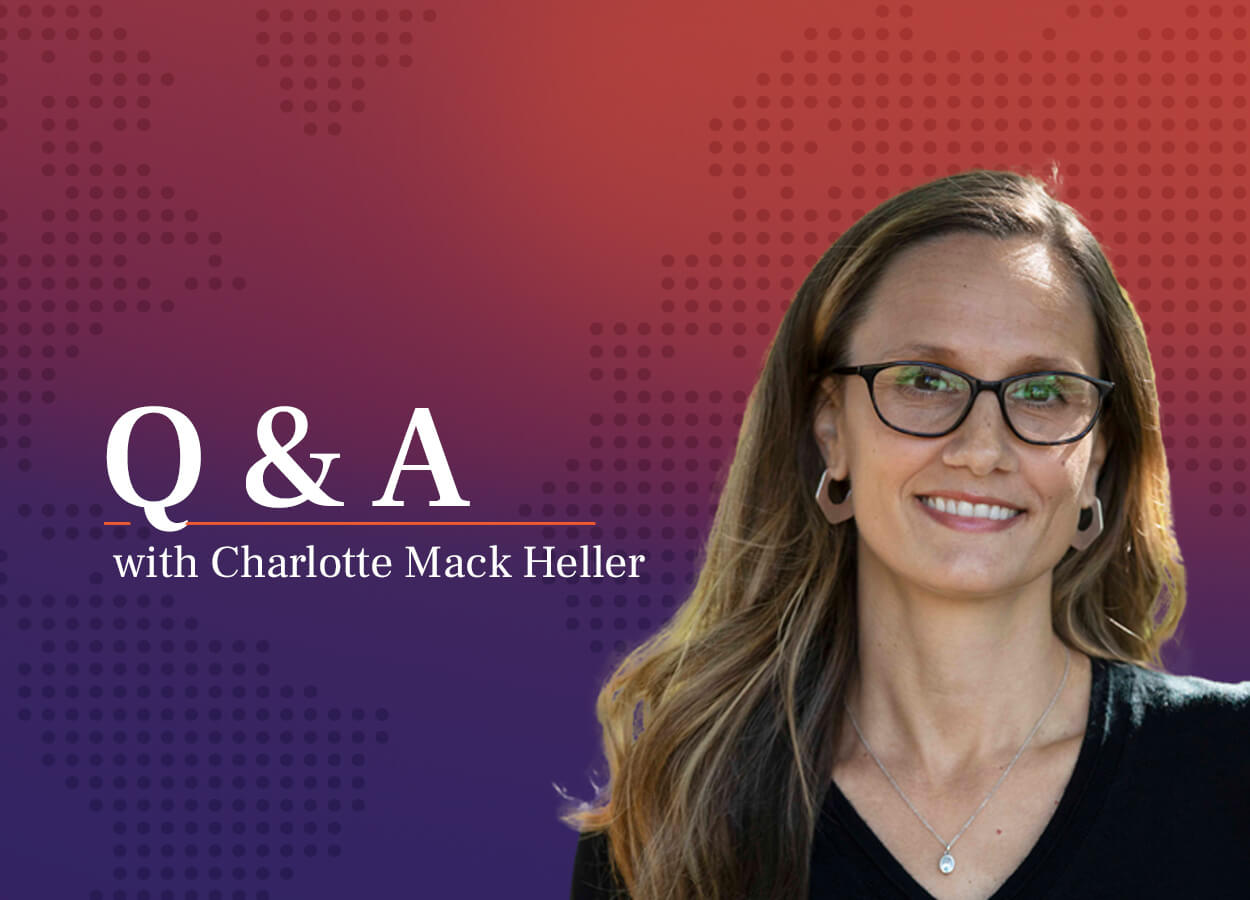The world is reeling from a global pandemic, but the climate crisis hasn’t gone anywhere. An overstretched global health system, battered economy, and the grave state of global food security have all demanded urgent attention; but climate change remains a near-unprecedented threat.
To rise to the climate challenge, we’ll need to get serious about innovation, collaboration, and action at scale.
Q&A With Charlotte Mack-Heller, Director, Natural Resource Management
We caught up with Resonance’s Director of Natural Resource Management, Charlotte Mack-Heller, to get her take on the partnerships we need for climate action, how the pandemic has affected progress, and how corporations and the Biden administration can reignite momentum.
In August 2021, the Intergovernmental Panel on Climate Change (IPCC) released a major new report, offering the most up-to-date insights on the physical science of climate change. What struck you about this report—and how might this knowledge help spur action and collaboration?
I’ve worked in the climate impacts field for almost 15 years, so I can’t say I found the findings of this report surprising. But it’s reassuring and important to see that with every IPCC publication, the science gets less ambiguous and the findings are stated with ever greater certainty and authority.
With this report, scientists make clear that climate change is not only an issue for future generations. We are already grappling with its impacts in the here and now. The challenge ahead is no longer just about curbing carbon emissions; we also need new ways to adapt to a very different future, a future where decarbonization strategies are embedded into our day-to-day lives and climatic extremes that we haven’t yet planned for will become much more commonplace.
More than ever, this IPCC report shows that we must genuinely believe—and invest—in the power of partnerships. We need to leverage the combined strengths of many different players to get to a state of transformative change.
Under business as usual, this is the only way we can avoid or mitigate the catastrophic climatic changes that will ultimately reshape our world. This type of action requires riskier outside-the-box thinking, substantial investment in research and execution, and a realigned vision of risk management.
Now is when we need our best and brightest and boldest thinkers to join forces to develop cross-sector partnerships that embolden and accelerate action.
Climate change is moving front and center on the global agenda. What do you see as the major ingredients for effective solutions, globally and at a local level?
We need a multi-stakeholder approach that encourages climate action from all sides. Policy drivers need to encourage collective action; public funding needs to foster innovation in the private sector; decisions need to be driven by science, and civil society organizations need to use their reach to influence decision-making at all levels.
I also think we’ll need a combination of natural climate solutions and technology. The more emissions reductions we can achieve through natural climate solutions—that is, conservation, restoration, and improved land management to boost carbon storage or limit emissions—the more we’ll be protecting other precious natural resources and endangered species. But, at the same time, technology is critical in achieving carbon reductions at scale—things like carbon capture and storage, battery storage, and new circular economy technologies, among others.
Lastly, we need to find a way to get the private sector to help finance climate change adaptation measures. The private sector has been intimately involved in mitigation in many aspects but is slow to support adaptation measures and investments that will protect communities. This is an area of need—as well as an area of opportunity for us to get creative in deploying cross-sector collaboration for climate impact.
What do you see as the biggest obstacles to achieving global climate commitments—such as those made at the Biden administration’s Leaders Summit on Climate or as part of the Paris Agreement?
The first and most immediate challenge is the COVID-19 recovery. A lot of human, financial, and social capital is being diverted from climate goals to focus on COVID response and global economic recovery. We will be feeling the implications of the pandemic for some years to come, but the more those resources can be directed toward holistic sustainability programming that also builds resilience and faces up to our climate future, the less behind we’ll be.
The second barrier is the fear of failure. Donors and development partners on the front lines of making progress on climate often get stuck using traditional development approaches. With the stakes so high, they find it hard to take chances on new ideas that could fail. Yet these risks have the potential to make a disruptive change. That’s one of the reasons why partnering with the private sector is so important. Taking risks is where the private sector thrives.
And what major trends have you seen in 2021?
One major trend: Leading companies have been stepping up with significant climate targets. Take, for example, aggressive new climate initiatives launched this year and last from PepsiCo, Microsoft, and Amazon. But many companies do not yet have comprehensive strategies in place to reach net-zero or meet other truly ambitious targets. This is especially true when companies try to look beyond their own direct operations to take on Scope 3—or more indirect—emissions as well.
This is where we need to look at opportunities that cross borders and sectors, that blend public and private sector initiatives and finance, and that embed different interconnected objectives—strategically combining climate programming with COVID recovery and advancements in conservation, health, and economic empowerment.
Lastly, I’d say that I see the conversation on climate change shifting with a new administration in place. There is a renewed sense of hope that we will see true investment in climate solutions at scale and that we may be able to shift our carbon trajectory to get ourselves on a better pathway. Municipal and state governments have been propelling us forward for the last four years and I think we’ll finally see true leadership at a national level moving forward. Rejoining the Paris Climate Agreement and the U.S. Earth Day Summit commitments are indicators of that.
Your team focuses on developing and implementing sustainable, market-led solutions to environment-related issues in emerging markets. What insights did you gain from operating in the age of COVID-19?
What is interesting is that despite such global devastation and despair, we have witnessed extraordinary resilience across our projects. For example, the fisheries supply chain in Ghana was barely impacted by COVID, showing that while key fisheries themselves may be on the brink of collapse, the supply chain is quite stable. And we’ve seen in places like the Philippines that where there was supply chain disruption, technology and innovation have enabled creative responses, such as using e-commerce to help fishers pivot to domestic markets.
I also have to say that donors and development partners didn’t miss a beat. It’s been pretty incredible to see how, despite the new challenges and travel restrictions, we’ve found a way to continue working toward our environmental goals.
What do you see as the role of the private sector in solving today’s major environmental challenges?
The consumer market is changing and influencing the way the world does business. Consumers are demanding more from corporations in terms of social and environmental accountability.
Shifting consumer preferences are forcing companies to take more accountability over their entire value chains and not just their specific operations. And this is what is driving new corporate commitments around biodiversity and other environmental issues. The world is more interconnected than ever before. It is much more difficult to turn a blind eye to social and environmental injustices in global supply chains.
The more we see leading companies take a stance on environmental issues, the more pressure it puts on governments and other businesses to follow suit. A good example of this is renewable energy. In many places, the private sector is out ahead of the government in divesting from coal and scaling up renewable energy investments. Many businesses know the shift is inevitable, so they would rather be leading than complying at a later date. I’m seeing this all over the world, not just in the U.S.
Editor’s Note: This post has been updated for accuracy and current best practices.




